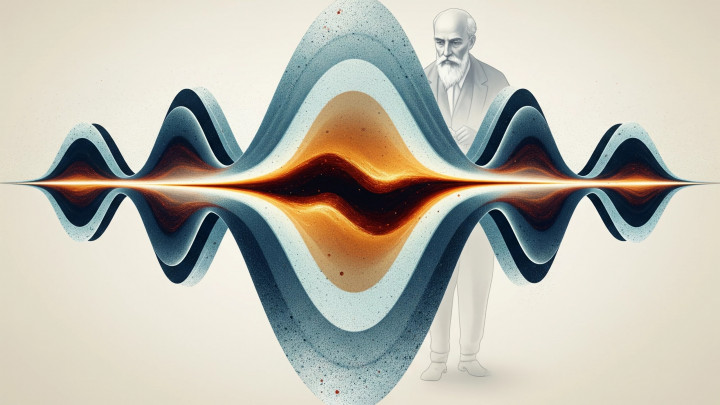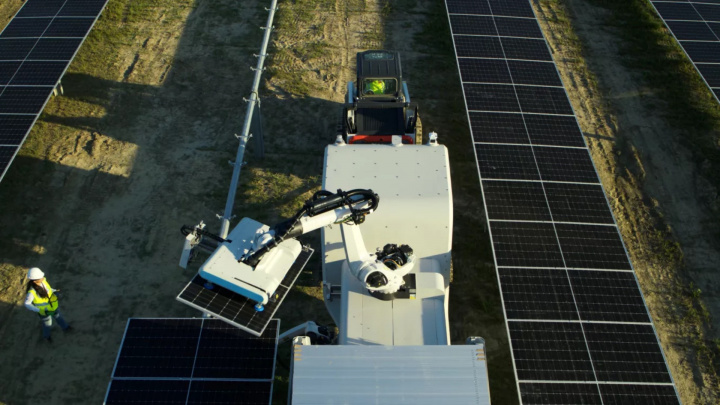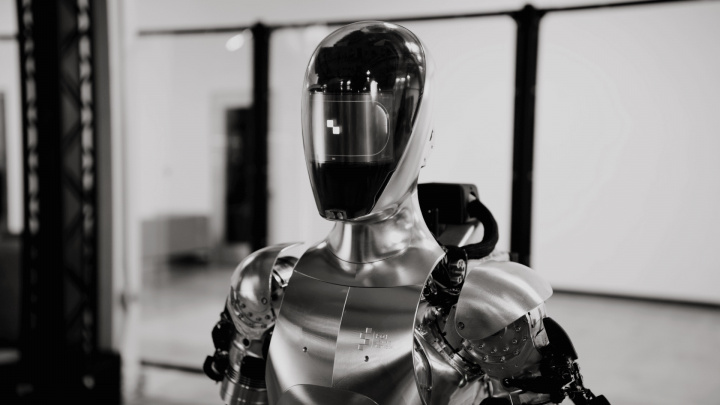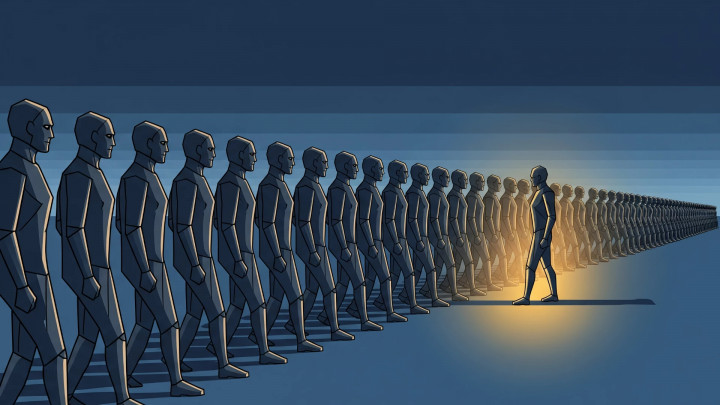The Hidden Rhythms of the Economy
As we navigate the daily flood of economic news—quarterly reports, market fluctuations, and short-term business cycles—it’s easy to get lost in the noise. But what if there’s a deeper, slower, and more profound rhythm shaping our world? A pattern that connects the age of the steam engine to the rise of railways, the era of electricity to the automobile, and the dawn of the computer to the rise of artificial intelligence?

This is the fascinating and controversial idea at the heart of the theory developed by Nikolai Dmitriyevich Kondratiev, known today as Kondratiev Waves or "long waves."
Who Was Nikolai Kondratiev? A Theory and a Tragic Fate
Nikolai Kondratiev (1892–1938) was a brilliant Russian economist active in the early 20th century. At a time when the Soviet regime was proclaiming the imminent and inevitable collapse of capitalism, Kondratiev’s research led him to a very different conclusion. By analyzing 19th-century economic data from the UK, France, and the United States—including prices, interest rates, and production levels—he identified a recurring pattern: capitalist economies did not proceed in a straight line toward their doom, but rather moved in long, cyclical waves lasting approximately 50 to 60 years.
His theory suggested an inherent capacity for self-regeneration within capitalism, a finding that stood in stark contrast to Marxist-Leninist dogma. For this, Kondratiev was branded an enemy of the state. His work was condemned, he was arrested in 1930, and he was ultimately executed in 1938 during Stalin's Great Purge. His theory, however, outlived him. It found a new audience in the West, most notably through the work of economist Joseph Schumpeter, who integrated it into his own theories of innovation and business cycles.
The Anatomy of the Long Waves: The Four Economic Seasons
Kondratiev's theory breaks down each long wave into four phases, analogous to the seasons. These are not just simple booms and busts; they represent deep, structural transformations in the economy, technology, and society.
- Spring (Expansion): This marks the beginning of the cycle, driven by the emergence of a new, revolutionary technological paradigm. Capital flows into these new industries, productivity soars, and inflation is low but begins to rise. Societal optimism is high, and thousands of new enterprises are born. It is a period of innovation and capital accumulation.
- Summer (Prosperity/Peak): The technological revolution matures and its benefits become widespread. The economy is running at full steam, with strong and pervasive growth. However, inflation accelerates, markets can become overheated, and speculative bubbles often form. Prosperity reaches its zenith, but underlying tensions are building within the system.
- Autumn (Plateau/Recession): Growth decelerates. The dominant technology has reached a point of diminishing returns and can no longer generate the same productivity leaps. Markets become saturated. Companies shift their focus from expansion to efficiency and cost-cutting. The debt accumulated during the boom years becomes problematic, and economic confidence wanes. This period is often characterized by "stagflation" (high inflation combined with economic stagnation) and prolonged recessions.
- Winter (Depression/Trough): This is the most painful phase of the cycle. The economy enters a deep crisis as speculative bubbles burst, companies go bankrupt, and unemployment surges. It is a period of "creative destruction" (a term coined by Schumpeter), where old, obsolete structures collapse to make way for the new. Social discontent and political polarization intensify. Though this is the most difficult period, it is in the depths of winter that the foundational innovations for the next spring are born.
What Drives the Waves? The Role of Technological Revolutions
While Kondratiev himself did not offer a definitive explanation for the engine behind these waves, his followers, especially Schumpeter, placed technological innovation at the center of the theory. According to this view, each long wave is kicked off by a "General Purpose Technology" (GPT). These are fundamental innovations that transform not just a single industry, but the entire economy and society.
Historically, the following waves have been identified:
- 1st Kondratiev Wave (c. 1780–1840): The Age of the Steam Engine and the Industrial Revolution. This era was defined by water power, textiles, and iron.
- 2nd Kondratiev Wave (c. 1840–1890): The Age of Steel and Railways. The expansion of rail networks connected continents and gave rise to modern heavy industry.
- 3rd Kondratiev Wave (c. 1890–1940): The Age of Electricity, Chemicals, and the Internal Combustion Engine. This brought us the automobile, mass production, and the modern metropolis.
- 4th Kondratiev Wave (c. 1940–1990): The Age of Petrochemicals, Electronics, and Aviation. This wave was characterized by plastics, transistors, television, and global air travel.
- 5th Kondratiev Wave (c. 1990–?): The Age of Information and Telecommunications. The revolution of the personal computer, the internet, and mobile communication.
Critiques and Caveats
While the Kondratiev Wave theory provides a compelling framework for interpreting economic history, it is far from universally accepted. The main criticisms include:
- Empirical Evidence: The existence of these cycles is difficult to prove statistically with rigor. Critics argue that proponents tend to "cherry-pick" data and fit events to the model after the fact.
- Determinism vs. Reality: The theory can seem overly mechanistic. External shocks like wars, major policy shifts, and pandemics (such as COVID-19) can significantly alter or disrupt the cycles.
- Timing: The length of the waves and the transitions between phases are not clockwork-precise and can vary significantly.
The Great Debate Over Long Waves
Though visually compelling, the theory of Kondratiev Waves remains one of the most debated concepts in economics. Throughout its history, prominent supporters and fierce critics have clashed over its validity, a testament to the theory's inspiring yet provocative nature.
On the Side of the Proponents
Arguably the theory's most influential developer was the Austrian economist Joseph Schumpeter. It was Schumpeter who explicitly linked the waves to technological innovation and introduced the concept of "creative destruction." Without him, Kondratiev's work might have remained a forgotten footnote in economic history. In the latter half of the 20th century, the neo-Schumpeterian and evolutionary schools of economics kept the concept alive. Thinkers like Carlota Perez have further refined the theory, developing the model of "techno-economic paradigms" which details how a technological revolution impacts the economy, society, and its institutions. Perez's work, in particular, has become highly influential among today's innovation scholars.
The Notable Critics and Their Doubts
Criticism has most often come from mainstream neoclassical economics, which tends to model the economy as a system seeking equilibrium and struggles to accommodate the idea of long, structural cycles. Simon Kuznets, a Nobel laureate recognized for his research on economic growth, meticulously examined long-term data but concluded that the evidence was not strong enough to support such a regular, 50-to-60-year cycle. In his view, the "waves" appeared to be a unique and non-repeating sequence of historical events, such as wars, gold rushes, and population booms.
Other critics attack the theory's perceived determinism. They argue that the model oversimplifies reality by downplaying the roles of political decisions, government regulation, and social movements in shaping economic development. The charge is that proponents of Kondratiev Waves are prone to finding patterns in the rearview mirror, but that the theory's predictive power is extremely limited.
This ongoing debate illustrates that Kondratiev Waves are best understood not as a law of nature, but as a powerful analytical framework that can help us grasp the deeper dynamics of long-term economic change and technological transformation.
Where Are We Now? On the Cusp of the Sixth Wave?
Most theorists who subscribe to the model agree that we are currently in the latter stages—the "winter"—of the fifth (information technology) wave. The 2008 financial crisis, slowing productivity growth, rising social inequality, and political instability are all hallmarks of this phase.
This, however, raises the most exciting question: what will be the driving force of the Sixth Kondratiev Wave? Which technologies will usher in the next spring? The leading candidates include:
- Artificial Intelligence and Machine Learning: Capable of automating not just manual but also cognitive tasks, transforming industries from healthcare to finance.
- Biotechnology and Gene Editing (e.g., CRISPR): Poised to revolutionize medicine, agriculture, and materials science.
- Renewable Energy and Green Technologies: The transition away from fossil fuels necessitates an entirely new energy and industrial infrastructure.
- Nanotechnology: The manipulation of matter at the atomic level, opening up new frontiers in manufacturing, electronics, and medicine.
These are not just new products; like their predecessors, they are platform technologies that will create entirely new industries while rendering old ones obsolete.
The Engine of the Sixth Wave? Artificial Intelligence as the Next Great Paradigm
As the cold winds of winter blow through the fifth, information technology wave—signaled by slowing productivity gains and market consolidation—all eyes are turning to a new, revolutionary force: Artificial Intelligence (AI). Many analysts argue that AI is not just another technology but the central driver of the Sixth Kondratiev Wave, a general-purpose technology whose transformative power may rival, or even surpass, that of the steam engine or electricity.
Previous technological revolutions primarily augmented human physical power or computational capacity. The steam engine multiplied muscle power, electricity transformed energy delivery and manufacturing, and the microchip accelerated data processing. Artificial Intelligence, however, promises something fundamentally different: the automation and augmentation of cognitive and creative work. Today, AI models can write code, formulate scientific hypotheses, generate art, and identify patterns in complex datasets that would elude human analysts.
This capability makes AI the perfect instrument for Schumpeter's "creative destruction." While it threatens to render entire industries obsolete (such as data entry, customer service, and even parts of software development), it simultaneously creates unprecedented opportunities. AI-driven drug discovery could shorten development timelines by years; autonomous logistics networks could reshape global trade; and personalized education and healthcare could become universally accessible.
This duality—the destruction of old structures and the creation of new ones—is the quintessential hallmark of a Kondratiev spring. If the theory holds, the uncertainty and economic struggles of our current "winter" are, in fact, the birth pangs of a new, AI-driven economic era. The question is no longer if AI will reshape the economy, but how fast, how profoundly, and whether society can successfully manage the immense transition that lies ahead.
Conclusion
The theory of Kondratiev Waves is not a crystal ball for predicting the future. Instead, it is a powerful lens through which we can view economic history and the present moment. It helps us understand that deep crises and structural transformations may not be signs of an ending, but rather the necessary precursors to a new beginning. While the "winter" phase is often painful and uncertain, history suggests it is always followed by a new, innovation-fueled "spring." How we harness the opportunities of the coming sixth wave is the challenge and responsibility of our generation. Understanding the economy's hidden rhythms is not about predicting the future with certainty, but about better navigating its powerful currents.





